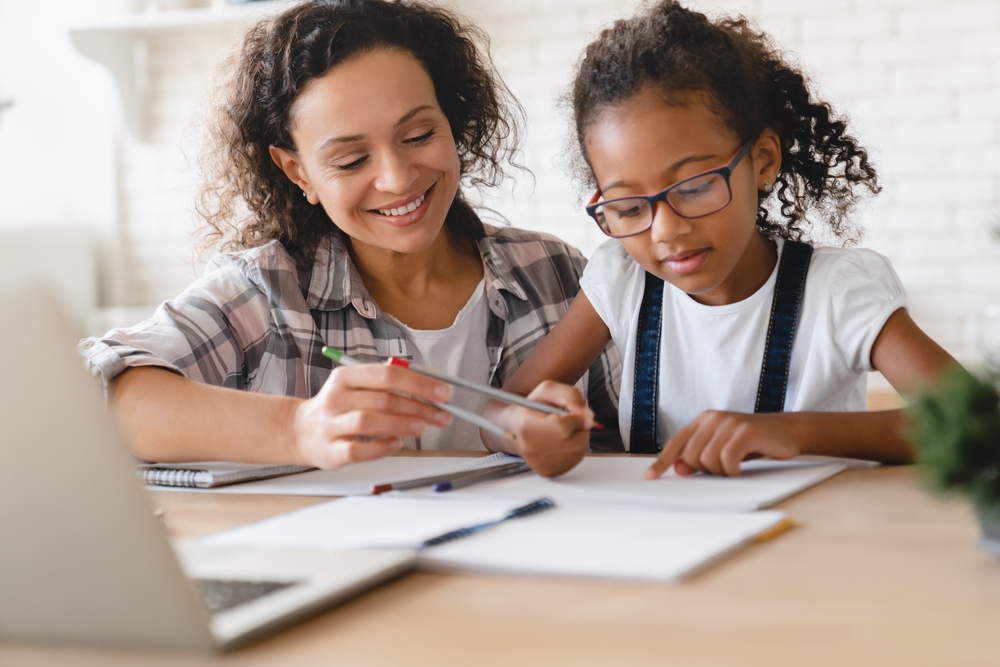
Active listening and reading are essential skills that play a vital role in a child’s cognitive development, academic success, and communication abilities. These foundational skills allow children to process and understand information more effectively. Let’s explore the significance of these competencies and how they impact children’s comprehension.
The Role of Active Listening in Enhancing Children’s Reading Comprehension
Children who engage in active listening go beyond simply hearing words—they concentrate on the speaker and interact with the message, whether it’s from a teacher, parent, or peer.
Active listening helps children analyze information, make connections, and infer meanings that go beyond the literal words spoken. It also teaches children to filter out distractions and focus on what’s important, which is crucial for understanding and retaining information. By participating actively in the listening process, children improve their memory as they summarize and question the content they hear.
Moreover, understanding the speaker’s perspective enhances their empathetic skills, allowing them to grasp emotional undertones and intentions. Parents and educators can support active listening by modeling attentive behavior, asking open-ended questions, and providing opportunities for children to discuss and reflect on what they’ve heard.
Improving Understanding Through Engaged Reading Practices
Active reading involves fully engaging with a text, not merely reading the words on a page. For children, this means understanding the story or the information being presented. Encouraging children to create mental images of what they read helps reinforce understanding and aids memory retention.
Children can also benefit from learning to highlight key points or write down questions as they read, which allows them to become more involved with the material. Asking children to predict what will happen next in a story encourages critical thinking and keeps them engaged. Additionally, relating what they read to their own experiences, other books, or world events helps deepen their comprehension.
Educators and parents can foster active reading by offering a variety of reading materials and discussing texts with children to encourage them to express their thoughts and questions.
Strategies for Overcoming Barriers to Reading and Listening Comprehension in Children
Despite the benefits of active listening and reading, many children face challenges in developing strong comprehension skills:
- Technology Distractions: Smartphones, tablets, and screens often reduce the attention span necessary for deep engagement with text or conversation.
- Limited Vocabulary: Children with a smaller vocabulary struggle to understand complex texts.
- Learning Difficulties: Children with ADHD, dyslexia, or similar challenges may find it difficult to focus on and remember information.
- Unequal Access to Resources: Not all children have access to quality educational materials, which can hinder the development of these critical skills.
Addressing these challenges involves a multi-pronged approach, including promoting a balanced media diet, building vocabulary, and providing equitable access to learning resources.
The Crucial Link Between Listening and Reading in Child Literacy
Listening and reading are closely linked and reinforce each other in significant ways. A child skilled in listening is often better equipped to understand the nuances of language, which enhances reading comprehension.
Similarly, strong reading skills help to improve listening abilities. Both skills share a common foundation in language comprehension. As children expand their vocabulary and grammar through listening, they become more adept at decoding written words.
Exposure to written language, in turn, introduces new linguistic structures that enrich verbal comprehension. Both listening and reading require extended periods of focus, which strengthens a child’s concentration and helps build stamina for tasks that demand sustained attention.
Additionally, both listening and reading involve the analysis of spoken and written language. Children must interpret information, infer meaning, and evaluate arguments, and the skills gained from listening—such as summarizing and questioning—are directly applicable to reading.
Listening and reading also promote the development of empathy, as children learn to interpret emotional cues through listening and gain exposure to diverse perspectives through reading. This interdependency highlights the importance of cultivating both skills simultaneously to foster profound literacy development and enrich a child’s overall learning experience.

Effective Methods for Integrating Children’s Listening and Reading Skills
To maximize the interdependent benefits of listening and reading, various strategies can be employed:
- Storytelling Sessions: Storytelling links listening with reading. Children first hear stories, then see them in written form, bridging the gap between the two.
- Audiobooks and Read-Alongs: Audiobooks allow children to listen as they follow along in a book, which improves pronunciation and fluency.
- Discussion-Based Learning: Discussing stories or lessons helps synthesize what was heard and read, strengthening comprehension.
Through such approaches, both skills can be cultivated simultaneously, enriching children’s learning experiences.
How Listening Proficiency Influences Reading Skills in Children
Listening is often considered the foundation upon which reading skills are built. Children who are good listeners typically become better readers because they have learned to process and understand spoken language effectively, which is a precursor to reading comprehension and fluency.
Strategies to enhance reading through listening include providing auditory models for pronunciation and rhythm through regular storytelling or read-aloud sessions. Listening to fluent readers helps children recognize the natural flow of language, which can translate into their own reading. Interactive read-alouds, where adults ask children questions and encourage them to predict what will happen next in the story, not only improve listening skills but also prepare children to actively engage with written text.
Listening centers, where children can hear books read aloud, provide additional support by facilitating a smoother transition to independent reading. Repetition also plays a key role—repeated exposure to stories, poems, and other written materials helps reinforce language patterns and familiarizes children with narrative structures. Moreover, building a rich vocabulary is essential for reading comprehension. Children who are exposed to a wide range of words through listening—whether in conversations, stories, or songs—develop a broad vocabulary that supports their reading skills.
Fun and Interactive Listening and Reading Activities for Young Minds
Interactive activities help solidify listening and reading skills. Here are some ideas for both:
Listening Activities:
- Follow the Leader: Children listen to instructions and act them out, reinforcing their ability to process spoken information.
- Sound Mapping: Playing sounds while children draw what they hear helps them focus on auditory discrimination.
- Musical Story Time: Playing instrumental music and encouraging children to create stories based on the music helps build comprehension without relying on words.
Reading Activities:
- Picture Walks: Exploring pictures before reading a story engages children and helps them predict the plot.
- Reading Bingo: A bingo game with different book genres encourages diverse reading experiences.
- Comic Strip Sequence: After reading a story, children can create comic strips to reinforce understanding of the plot.

Implementing Listening and Reading Comprehension Activities in the Classroom
In classroom settings, incorporating listening and reading activities into the literacy curriculum can help children develop critical comprehension skills. Interactive learning stations that use audio-visual materials, listening exercises, and reading platforms can engage students with texts in various ways. Group projects, such as reader’s theater or literature circles, offer opportunities for students to collectively engage with texts, which not only enhances comprehension but also encourages peer learning.
Additionally, integrating digital tools like apps and online platforms can make listening and reading exercises more dynamic and engaging. Customizing lessons to include texts that cater to students’ interests and reading levels can further help maintain their engagement and comprehension.
Synergizing Active Listening and Reading Comprehension
Active listening and reading, when cultivated together, form the foundation for sophisticated comprehension skills that are essential for academic achievement and lifelong learning. These two skills mutually reinforce each other—active listening helps children understand spoken language, which supports reading proficiency, and active reading exposes them to new vocabulary and language patterns that enhance listening comprehension. Both skills draw on and strengthen cognitive abilities such as memory retention, attention to detail, and critical thinking.
By fostering both active listening and reading skills, educators and parents can help children not only consume information but also engage with the world in a more thoughtful and critical way. The responsibility for cultivating these skills lies with both families and educators, who play an essential role in creating environments that support children’s development.
Unlock your child’s full potential with Readability Tutor! Readability Tutor is an award-winning app designed for K-6 students that helps children improve their reading and comprehension skills. Our voice-based AI tutor offers a personalized learning experience, complete with real-time feedback and critical thinking exercises. Watch your child grow into a confident, proficient reader with us. Visit Readability Tutor today and take the first step towards a brighter educational future!

 Español
Español